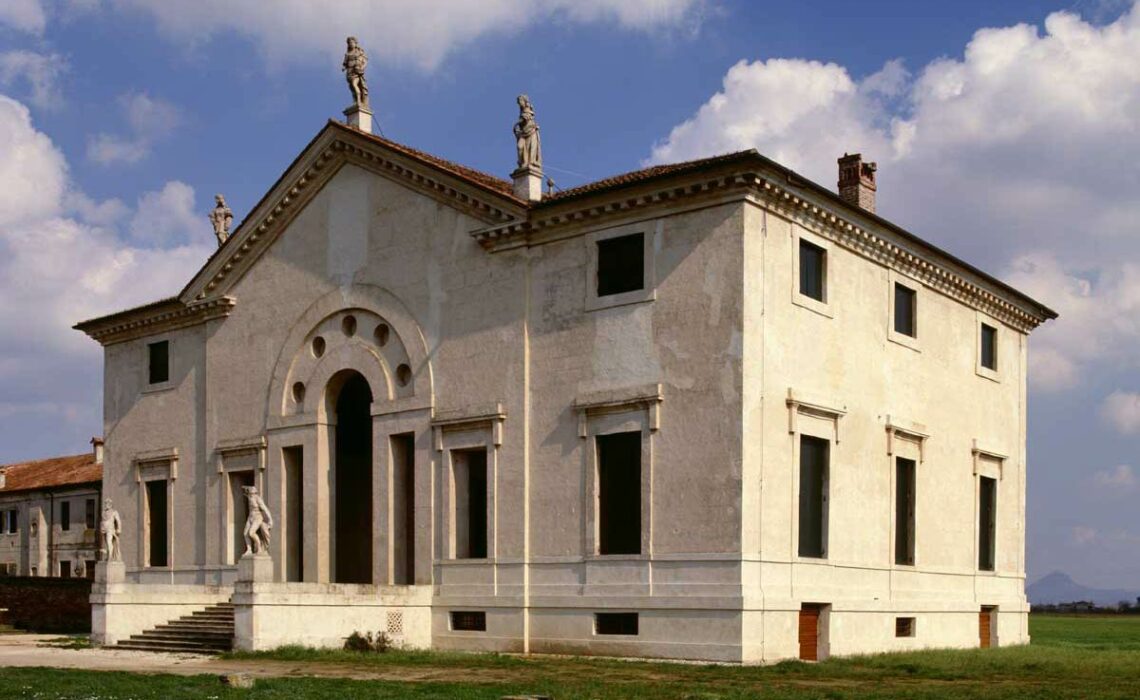
Venice and a new approach to rurality
An historical space. Ferrying the architectural narrative “from text to context.” Felice Mometti tell as you can see in an interview of 1986, Manfredo Tafuri answered to the question of the role of criticism in the development of architectural discourse “Criticism does not exist, there is only history.” Most complex assumption taken, free from any provocative meaning if one refers to the essay The Sphere and the Labyrinth:
The history is (…) a “produce” in every articulation of the term. Production of meanings, from the “signifying traces” of events, analytical construction never set in stone and always provisional, a tool for deconstructing ascertainable realities. History is determined and determining it is determined by its own tradition, the objects it analyses, the methods it adopts; it determines the transformations of itself and of the real that deconstructs.
The Tafuri’s Research for the Renaissance, with the specific of a careful studio of the relationship between Venice and the Humanism, illuminates the knowledge of a path that moves between project and place. Tafuri proposes a portentous reflection on a large scale, where the territorial political strategy meets the design and figurative results, to arrive at the observation that “ideological, political settlement aspects, and not just the abstraction of form” move in Palladio’s design.

Andrea Palladio, plant of Villa Almerico Capra (known as La Rotonda), in The Four Books of Architecture, 1570.
The Veneto region and the civilization of the villas
Venice invents Veneto and Veneto will change Venice.
Philippe Daverio, 2013
In the early XVI century, the history of Venice changed substantially following the fall of Constantinople, as well as with the discovery of America by Christopher Columbus.
As Daverio again reports:
[…] from the sea begins to think to the land. And then, in 1508, there is the last attempt to repress the Serenissima, made by the League of Cambrai that put together the Empire, France and the Papacy. Until that moment, Venetian painting always and only represented the city […] After that bizarre mess, Venice changed direction, it looked definitively to the mainland.
The decline of a mercantile economy with the gaze looking to the East, the expansionism of the Turkish Empire towards the West, a fleet rivalled by fast English vessels, pushed the Venetian ruling elite to move slowly along other paths: a careful reorganization of internal trade routes followed, as well as new investments in the safer agricultural development of the Venetian countryside.
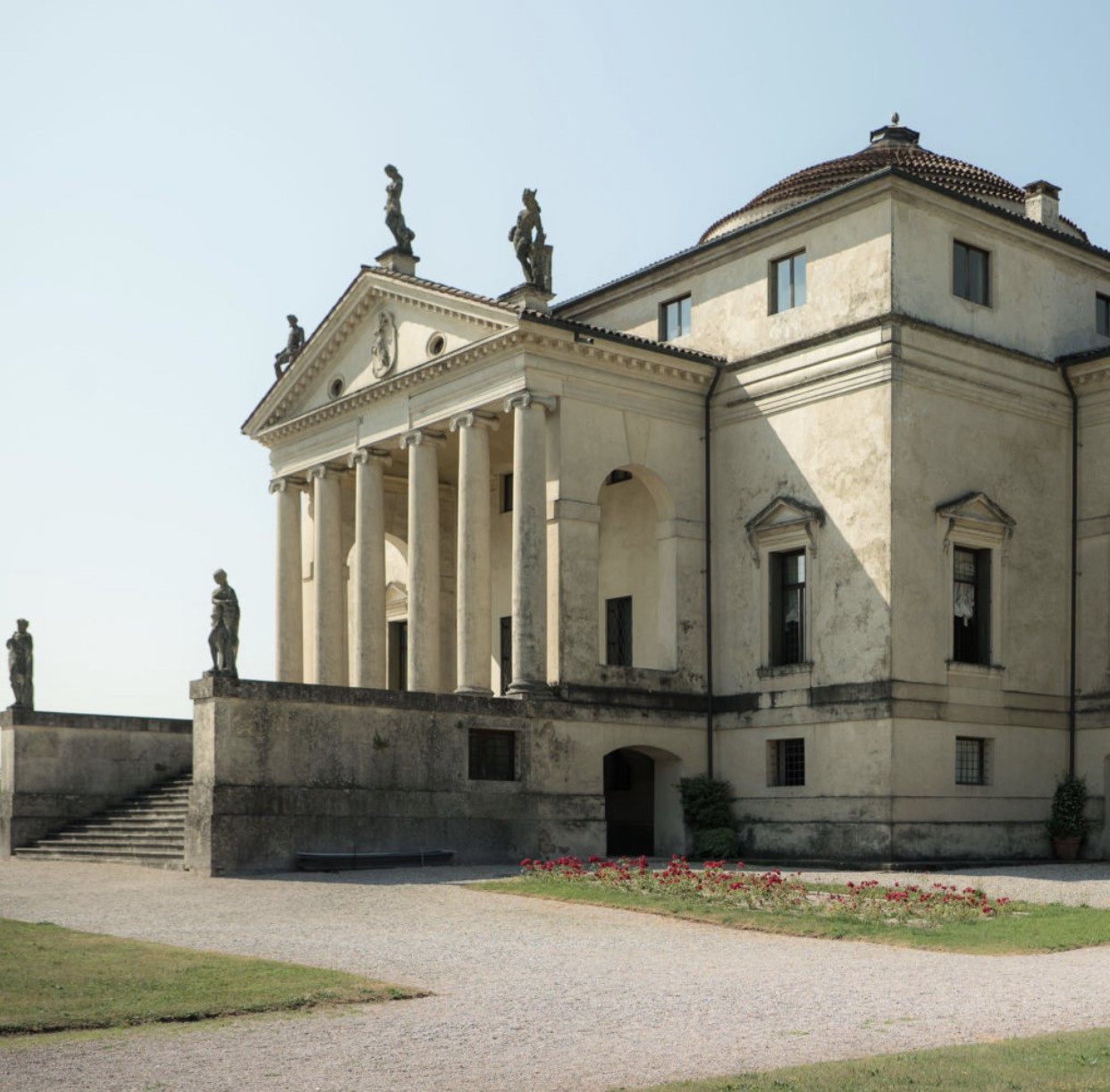
Andrea Palladio, Villa Almerico Capra (called La rotonda), 1566-85, Vicenza.
As Domenico Chizzoniti writes in Andrea Palladio. Ideology and figuration:
The waiver of expansion policy beyond the borders of the Venetian state – a declaration announced by the doge Andrea Gritti who installed from 1523 until 1538 – relaunched the lagoon city towards new splendour, as a happy island and refuge for Italy’s notable artists and men of letters. […] The intention of planning strategic relocations in the countryside, which the Venetian capitalist nobility aimed at, was clear […].
In the new political and commercial program, the city of Venice assumes the power and the assignment of directionality and coordination of all those activities carried out in the rural and peripheral centres of the hinterland.
During the years following the defeats of Agnadello and Cambrai, suffered by the Serenissima, the rebirth of the Venetian state took place through a series of measures that tended to consolidate the ‘myth of Venice’ as the ‘third Rome’. The city, going through a serious economic crisis, decided to proceed with a generalised ‘renovatio imperi’ […].
Andrea Palladio and the plans for an infrastructured countryside
If Sansovino’s classicism, inclined as much to renewal as to respect for the Gothic tradition dear to the conservative Venetian aristocracy, attracted the favour of the leadership, Palladio’s new classicist aspiration and synthesis succeeded in achieving accomplished affirmation in the ‘independent areas’ of the countryside. Territories little or not at all probed by the claimed city tradition.
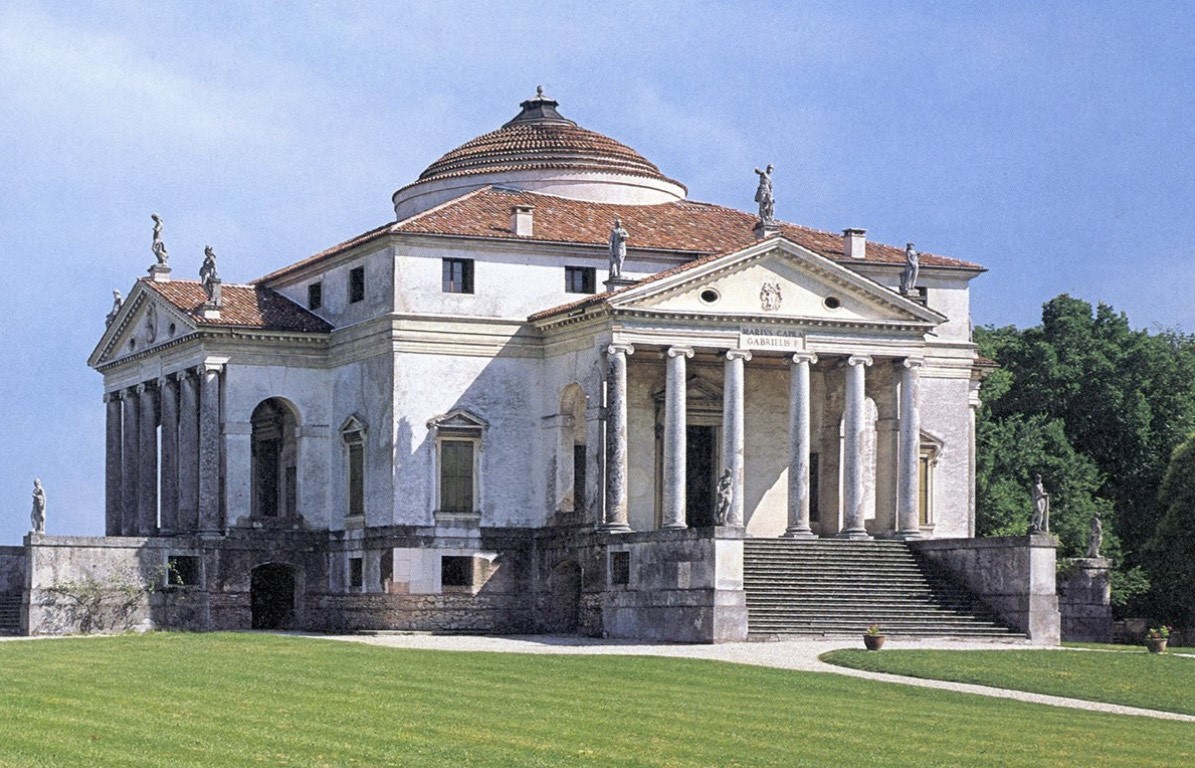
Andrea Palladio, Villa Almerico Capra (called La rotonda), 1566-85, Vicenza.
The Palladian plan breaks the path of a Venetian figurative tradition, emblem of a political model strongly entrenched in an oligarchic type of conservatism. His project, which is built on individual units, shapes, resorting to a refined reinterpretation of the classical code, expresses all the desire for the ‘monumentalisation of the Veneto landscape’.
As Aldo Rossi will write:
[…] This physical constitution of the landscape, which is the undoubted characteristic of every intervention by Palladio – in the sense that he accentuates and defines it – is also constituted by a form of collective imagination that finds in the special continuity of classicism in this land, an image that concretely includes Venice and the mainland city in a single frame of reference […].
Noble and healthy country life
[…] In all the buildings of the Villa, & also in some of the City, I have made a Frontespicio in the front facade; where are the main doors: because these Frontespici mark the entrance of the house, & serve much to the grandeur, & magnificence of the work; making in this way the front part more eminent than the other parts: besides that they are very convenient for the Insignia, or Weapons of the Builders, which are usually placed in the middle of the facades […].
Andrea palladio, 1570
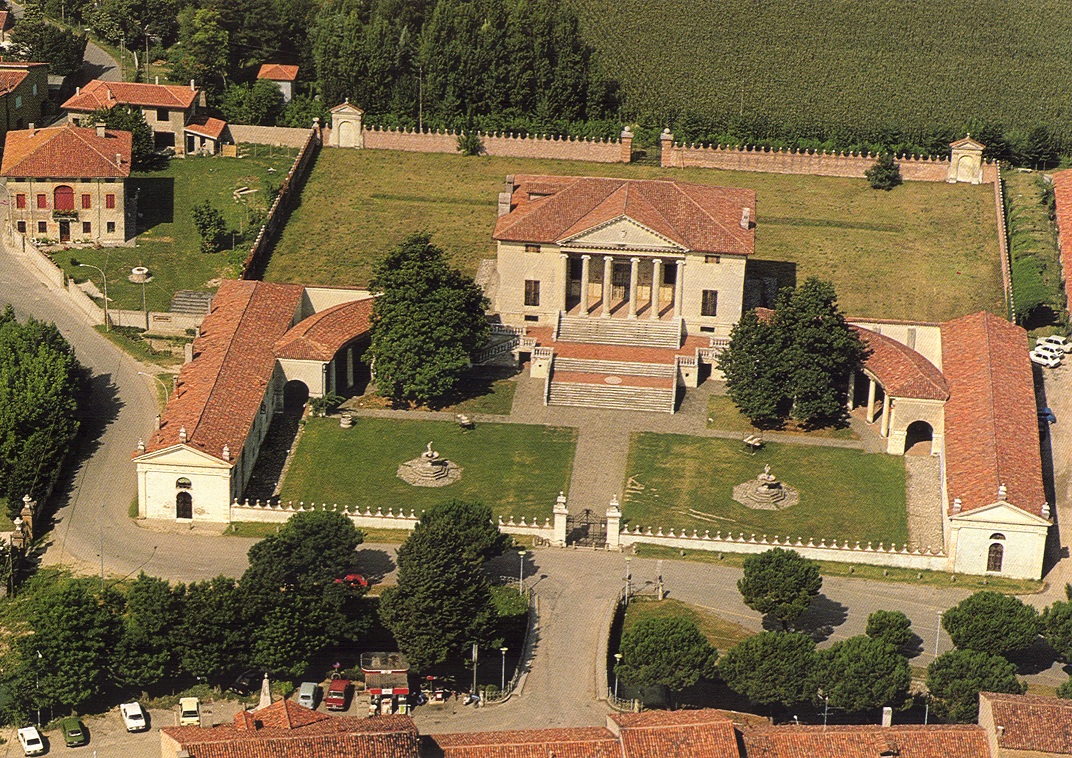
Andrea Palladio, Villa Badoer (called La Badoera), 1555-1557, Fratta Polesine (RO).
The myth of the wholesomeness of everyday rural life, with the subsequent revival of the country villa, dates back to the early XV century. Locus amoenus and refuge from the active city life, the narrative of the countryside among the nobility and aristocracy was always motivated and accompanied by the reading of works on villa life (Horace, Lucretius, Varro, Pliny the Younger). The hedonistic spirit, especially in the Veneto area, was then accompanied by the reason for practical activity, with the agronomic manuals of Cicero and Pliny the Elder. Pragmatism and an ‘entrepreneurial’ spirit extremely akin to a city aristocracy that sought new profit in the countryside and the resulting agricultural production.
Architectural ideology, referring to construction techniques, to the relationship between shapes and volumes in urban morphology, to design theories, is formed within the transformations of production relations. It is an ideology that is not satisfied with merely mystification of reality and false consciousness, but is oriented by the search for its constituent elements in ‘materiality’ – organization of labour, symbolic codes of production […]
Felice Mometti, 2012
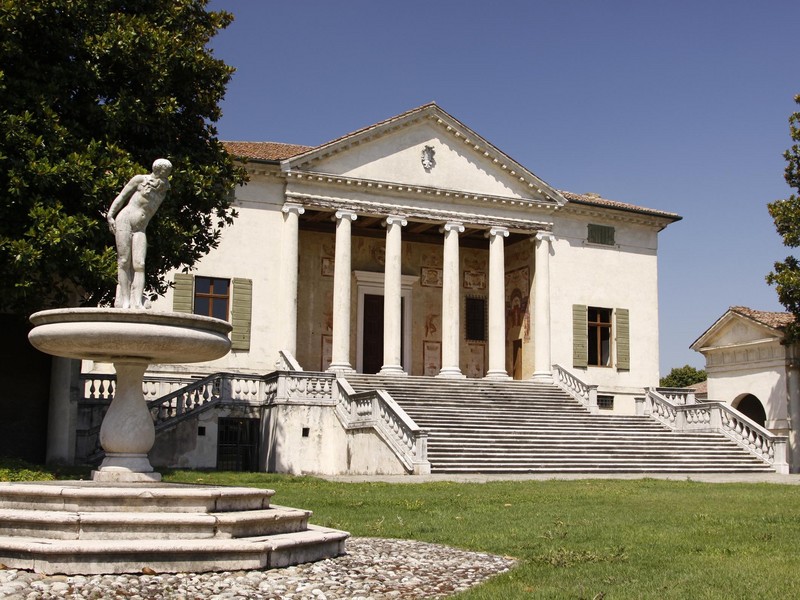
Andrea Palladio, Villa Badoer (called La Badoera), 1555-1557, Fratta Polesine (RO).
With Palladio the rural settlement assumes the role of the city’s terminal; the community then gravitates around the villa and the landowner leadership, which coordinates its production activities:
The organisation of the villa shows the efficiency requirements comparable to a high-performance production unit. However, its overall figuration reveals a degree of eccentricity, intended to enhance its image and notice the degree of civilisation achieved […].
Domenico Chizzoniti, 2017
As Philippe Daverio once again reminds us, ‘Venetian luxury moved to the countryside, where, in Palladio’s villas, it found the opportunity for the highest exaltation, and endless emulators of its taste and making’.
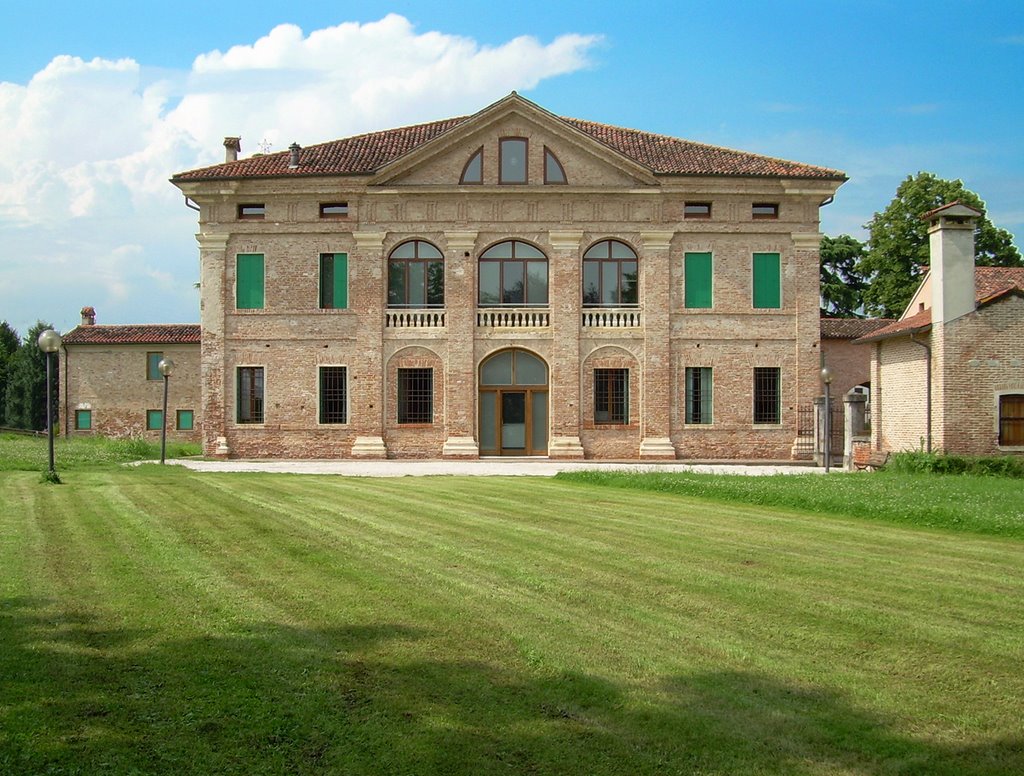
Andrea Palladio, Villa Thiene, Valmarana, 1545, Quinto Vicentino (VI)
Source of the photographic repertoire www.villevenete.net
Bibliographical references
Chizzoniti D., Andrea Palladio. Ideologia e figurazione, Mimesis, Sesto San Giovanni 2017.
Mometti F., Ideologia come architettura. Manfredo Tafuri e la storia critica, in «Scienza&Politica», vol.XXV, Universitè Paris VIII-Saint Denis, Saint Denis 2012.
Palladio A., I quattro libri dell’architettura, Libro II, cap. XVI, Ulrico Hoepli Editore, Milano 1990.
Rossi A., Caratteri urbani delle città venete. Le città venete e l’architettura palladiana, in AA.VV. La città di Padova, Officina, Roma 1970.
Tafuri M., La sfera e il Labirinto. Avanguardie e architettura da Piranesi agli anni ’70, Einaudi, Torino 1980.
Tafuri M., Venezia e il Rinascimento. Religione, scienza, architettura, Einaudi, Torino 1985.
Tafuri M., Ricerca del Rinascimento. Principi, città, architetto, Einaudi, Torino 1992.